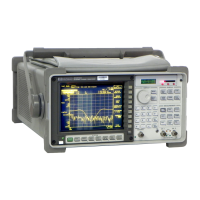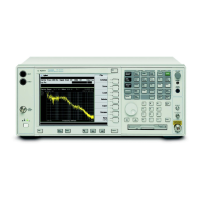Connect the device-under-test/signal source
Each task illustrates the measurement setup. In most cases, the standard
two-channel Agilent 35670A is used in the illustration. If you are using a
four-channel analyzer (Option AY6), the source connector is located on the
rear panel. (The two-channel analyzer has a source connector on both the front
and rear panels.)
Set measurement parameters
Measurement parameters affect the way the analyzer takes input data. Most of
these selections are grouped under a set of hardkeys in the front panel’s
Measurement Group. If you change a parameter under one of these menus you
need to take new data.
Specifying frequency data
The Agilent 35670A has a default resolution of 400 lines (401 points, or
bins)—and you can specify 800, 200, or 100 lines of display resolution.
However, for a given display resolution, narrower spans have finer frequency
resolution. This is because the same number of display points represents a
smaller range of frequencies.
Full-span measurements let you view the entire frequency spectrum on one
display. With the Agilent 35670A, the spectrum can extend from 0 Hz to
102.4 kHz for one-channel measurements, up to 51.2 kHz for two-channel
measurements, and 25.6 kHz for four-channel measurements. This provides a
frequency resolution, at full-span and 400 lines of resolution, of 256 Hz, 128
Hz, and 64 Hz respectively.
Alternatively, you may wish to view smaller slices of the frequency spectrum.
You can select any number of different spans and position these spans where
you want by specifying their start or center frequencies. You can also select
different spans by specifying a center frequency and a span width. This
process of viewing smaller spans is sometimes called “zooming” or
“band-selectable analysis.”
Measurements with spans that start at 0 Hz are often called baseband
measurements. Those with spans that start at frequencies other than 0 Hz are
often called zoomed measurements.
Agilent 35670A
Setting Up a Measurement Operator's Guide
Part I-6

